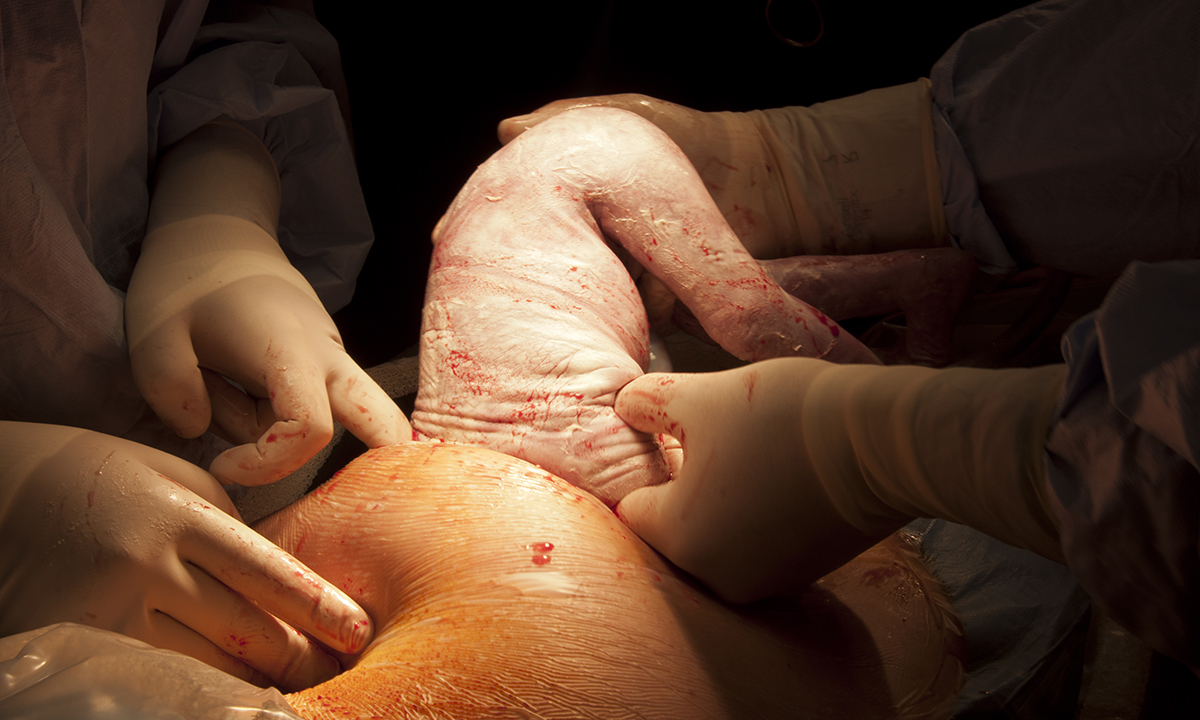LEADING obstetricians are calling for World Health Organization caesarean rate targets to be abandoned because they do not reflect Australia’s demographic changes over the past 30 years, nor the vastly different demographics across the 194 WHO member countries.
In a Narrative Review published in this week’s MJA, Professor Stephen Robson, president of the Royal Australian and New Zealand College of Obstetricians and Gynaecologists, and Professor Caroline de Costa, Professor of Obstetrics and Gynaecology at James Cook University, said that the WHO’s recommended maximum caesarean rate of 15% was “idealised” and “too low”.
“The demographic profile of Australian women makes [achieving a 15% caesarean section rate] highly unlikely and, were it to be achieved, it would expose more women to the risk of surgery in later life,” they wrote.
At present, around one in three deliveries in Australia are by caesarean section.
Professors Robson and de Costa said that the WHO recommendation, originally made in 1985, primarily considered maternal and perinatal mortality, which were short term and “severe” outcomes.
“What is not considered are the longer term effects of birth on women; in particular, pelvic organ prolapse (POP) and urinary incontinence (UI) in later life,” they wrote. “Vaginal birth complicated by POP and UI in later life consigns women to symptoms that are often miserable to endure, last for many years, interfere markedly with quality of life and commonly lead to surgical treatments associated with much greater rates of complications and reoperation than with an initial [caesarean section].”
They noted that as the caesarean section rate had increased in Australia, the incidence rate of surgery for POP and UI in women had gradually decreased.
Speaking in a podcast, Professor Robson said that the potential complications associated with an at-term caesarean section needed to be considered alongside the “downstream” risks to women of a traumatic vaginal birth.
“If [a woman has] surgery for prolapse or incontinence, it tends to be in a much older age group, when [women] are less fit for surgery, and there is quite a reasonable reoperation [and] complication rate,” he said.
Serious complications such as placenta accreta occurred with repeat caesarean deliveries, Professors Robson and de Costa wrote, but the odds only reached statistical significance at the third or subsequent caesarean delivery.
“In Australia, parity is falling, and only 20% of women will have more than two births.”
Professor Robson told MJA InSight that demographic changes in Australia – such as increasing age at first birth and the prevalence of overweight and obesity – had contributed to an increasing rate of caesarean sections in Australia. Although, he added that the rate had stabilised in the past few years.
Professor Robson pointed to 2014 South Australian research that he conducted with colleagues, which found that increasing age at first birth contributed to almost 75% of the increase in caesarean section and instrumental delivery.
In 1993, only 26% of women had their first child at age 30 years or older; by 2013, 45% of women had their first child at age 30 years or older, with 14% of women aged over 35 years.
The increasing prevalence of obesity in Australia was also having an impact on caesarean rates, he said.
“We know very well that women who are overweight and obese, in particular, are more likely to run into pregnancy problems and are more likely [to have a caesarean delivery],” Professor Robson said.
“As many as a third of women are overweight or obese when they are having a baby in Australia.”
In the MJA, Professors Robson and de Costa also questioned the logic of having an international caesarean section target rate for countries with vastly different demographics and access to health care.
They contrasted the experience of Australia with Papua New Guinea (PNG), which has a caesarean rate of less than 5%.
Speaking in the podcast, Professor de Costa said that applying the same caesarean rate recommendation to two such different countries showed no consideration for facts.
“In PNG, a very high proportion of women will have their first baby before the age of 20 years, they are in general not overweight at all, and they have on average more than 4 children, so this is a very different population between the two [countries],” she said, adding that access to health care was also a key difference.
She said that an estimated 60% of women in PNG had no trained person, including traditionally trained people, in attendance at the birth.
Professor de Costa said that the WHO targets were not relevant to practice today.
“They are very often trotted out by people who want to say that we are doing too many caesarean sections without any acknowledgement that they do come from 1985 … and the fact that there have been many changes in practice and many changes in the demographics … certainly in Australia,” she said.
Professor Robson and de Costa concluded that caesarean section should be provided to women according to need. They said women should continue to be included in the conversation about the short and long term benefits and disadvantages of birth by caesarean delivery.
A podcast with Professor Stephen Robson is available here.
To find a doctor, or a job, to use GP Desktop and Doctors Health, book and track your CPD, and buy textbooks and guidelines, visit doctorportal.

 more_vert
more_vert
Specialist fees ore only one since of the equation. Level of expertise and difficulty of case-mix are not reflected in the Medicare Schedule so we are left with a system that regards all procedures as being the same when clearly they are not. A fee “league table” would likely arise that would unfairly discriminate against Drs who perform more difficult procedures. Unless this can be dealt with possibly in the similar manner as occurs with anaesthetic billing it would be unfair.